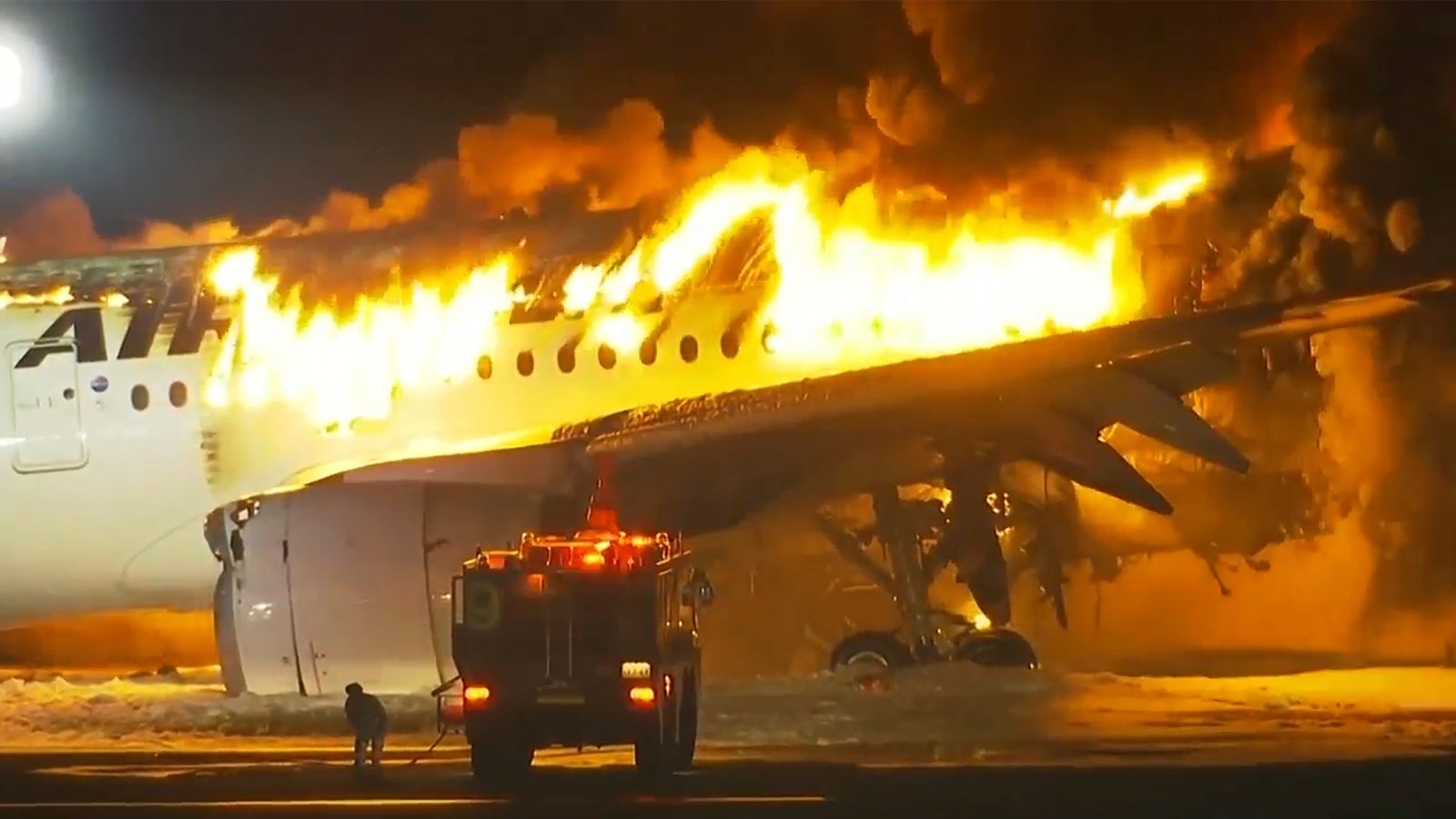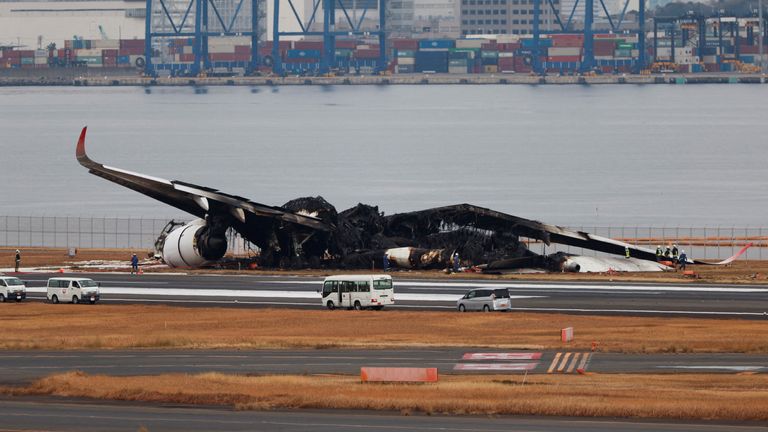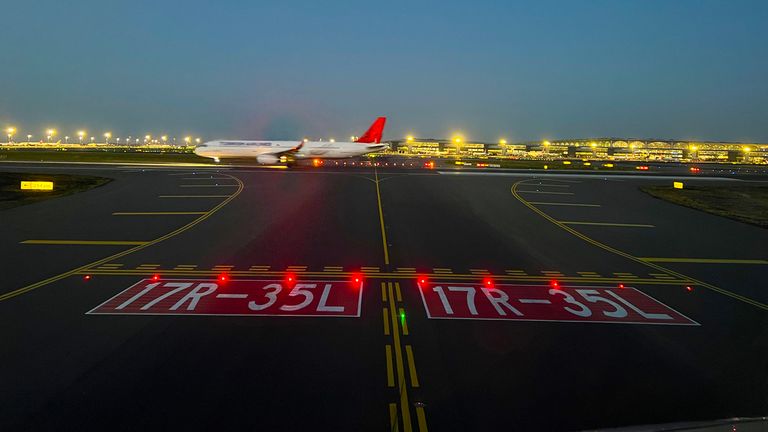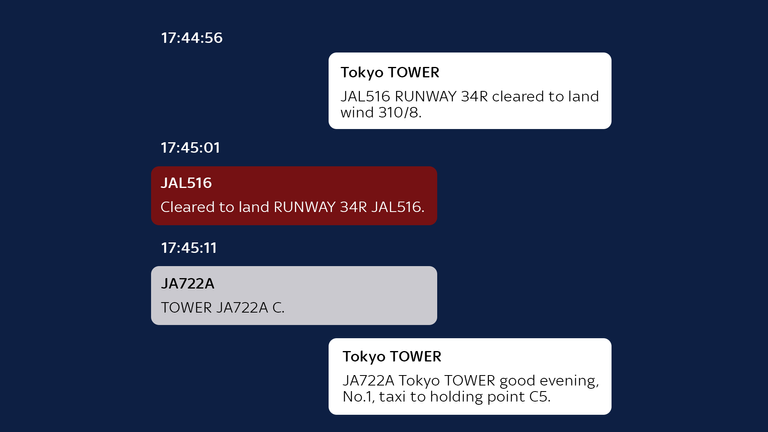Red warning lights which tell pilots not to taxi planes on runways were “unserviceable” during an air crash in Japan which killed five people, according to an alert system.
Air traffic control transcripts from moments before the crash show how a coastguard plane was told to wait at a holding spot beside the runway minutes before it collided with a Japan Airlines (JAL) flight preparing to land at Tokyo’s Haneda Airport.
However, red warning lights, known as stop bars, for that holding spot and several others on the runway were “unserviceable” at the time, according to a NOTAM (Notice to Airmen) alert.
Five people on the coastguard plane were killed but all 379 people on the JAL flight were safely evacuated.
Only the captain of the smaller coastguard aircraft survived, a coastguard official said.
‘Almost certain’ crash avoided if lights worked
Stop bars are used as an extra safety measure to prevent planes from entering a runway when it is in use.
Even if an air traffic controller gives the green light for a plane to taxi onto the runway, pilots are trained to refuse if the stop bar lights are still on.
The International Civil Aviation Organisation (ICA) also says pilots should “never cross” the lights when illuminated and air traffic controllers should “never instruct a pilot or vehicle driver to cross an active stop bar except when contingency measures are in place”.
When stop bars are unserviceable – either because they are not working or they cannot be switched off – airports are advised to use “follow-me” vehicles in their place.
One industry source told Sky News that, while stop bars being out of operation would not have caused the crash, they “almost certainly would have prevented it”.
Sky News has contacted Haneda Airport and Japan’s Transport Ministry for comment.
Pilot denies entering runway without permission
The runway at the airport in Tokyo, one of the world’s busiest, has been closed since the collision on Tuesday. It will likely reopen on 8 January, according to Japanese Transport Minister Tetsuo Saito.
Crews at the airport began clearing the charred wreckage of the Japan Airlines plane from the runway on Friday as the investigation into the cause of the crash continues.
It comes after a full transcript detailing air traffic control conversations moments before the fatal plane crash at the airport was released by authorities in Japan.
The transcript shows the discussions between the airport’s control tower and the two planes involved in the collision.
The Tower transcript suggests the JAL passenger flight was given permission to land, while the coastguard plane was told to wait at a holding point next to the runway.
According to the transcript, released by Japan’s Transport Ministry, the coastguard plane appears to confirm the order to hold beside the runway back to air traffic control before the collision.
But the captain of the coastguard aircraft says he entered the runway after receiving permission.
The pilot of the Bombardier Dash-8 Turboprop coastguard plane is badly injured after escaping the crash.
‘Strong possibility of human error’
The JAL flight, which was arriving from the northern island of Hokkaido, burst into flames after the crash on Tuesday.
Authorities are now investigating exactly what happened, including how the two planes ended up on the same runway.
Read more:
Japan plane fire: What happened
Small coastguard jet ‘wasn’t cleared for take-off’
Tokyo police also are separately investigating whether professional negligence could have contributed to the crash, according to local media.
“There’s a strong possibility there was a human error,” said aviation analyst Hiroyuki Kobayashi, a former JAL pilot.
“Aircraft accidents very rarely occur due to a single problem, so I think that this time too there were two or three issues that led to the accident.”







